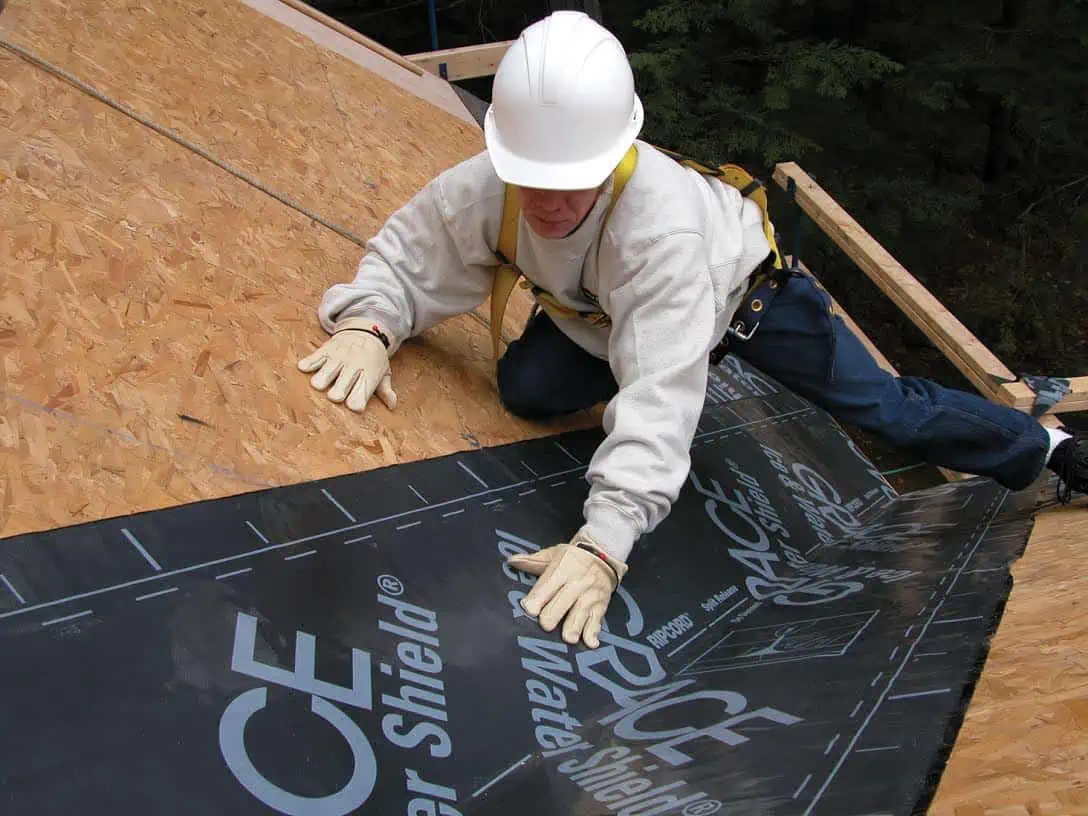With the winters we’ve had in Michigan recently, more and more consumers are looking to ensure their roofs are ready to withstand the punishment. Shingles are the most well-known and visible product applied to homes, but there is a very important product that must be applied before shingles are installed. For years, this was felt or tar paper, which was rolled out prior to laying down any shingles. But now there is a better system keeping your roof deck, attic and home dry and leak free: this is Ice and Water Shield.
What is it?
Ice and water shield is a self-adhering, rubberized asphalt sheet. This rubberized, self-adhering nature allows it to maintain a watertight seal around nail penetrations. This is the major drawback of the old method of underlayment, felt and tar paper.
Felt paper does not have the ability to seal tight around roof nails, can wrinkle and shift and also have issues where joining up against other sheets of felt paper. All of these issues lead to potential sources of leaks and is the reason Pro Home Improvement uses Ice and Water Shield along with synthetic underlayment exclusively instead of felt paper.
Why do I need it?
Asphalt shingles do a fantastic job of standing up to the sun, wind, rain and snow for years – but, they do need some backup from time to time, especially in the case of extreme weather or ice damming. Ice and water shield provide a secondary layer beneath your shingles. This secondary layer serves to separate the roof deck from the roof covering, shed water and provide secondary weather protection.
Ice damming is when a warm attic space in the winter causes snow to melt and then refreeze elsewhere. This ice buildup typically occurs near the lower portion of the roof, often near the gutters, causing large icicles and ice buildup in the gutter.
Ice dams are a problem because they cause all kinds of havoc. (Ice and water shields will not prevent ice dams from occurring, that is best achieved through great insulation and ventilation of your attic space. Check out our other Pro Advice to learn more about that!) Ice dams can destroy your gutters, break your shingles and push water up underneath your shingles.
Without an ice and water shield in place, this water would be held up against your roof deck, eventually leading to rot and roof deck failure. This isn’t even something you would notice until you inspected it up close or noticed a leak coming through on your drywall. This is why ice and water shield is so important.
Where does it go?
The best method of applying Ice and Water Shield for most effectiveness is to install it on the first 6 feet of roof next to all of the eaves and also 3 feet to cover all valleys. These are the areas most prone to excess water and ice.
What about the rest of the roof?
Ice and Water Shield is best used in high water and ice areas, so there is quite a bit of other roof area that does not receive it. The rest of the roof benefits from having a synthetic underlayment installed. Synthetic underlayment is lightweight and provides excellent resistance to tearing and wrinkling compared to traditional felt. They are immune to fungal growth because they do not absorb water. They are resistant to UV damage. Synthetic underlayments can even be left exposed to severe weather if necessary.
Using the best possible materials to back-up your hardworking shingles is important to extend the life of your roof. Make sure you use Ice and Water Shield where it counts and synthetic underlayment to cover all other areas. Of course, the best materials will never make up for faulty installation, so be sure to call Pro Home Improvement to get the best of both worlds, top-of-the-line materials and world class installation. Call 888-776-1998 or get an estimate today.

